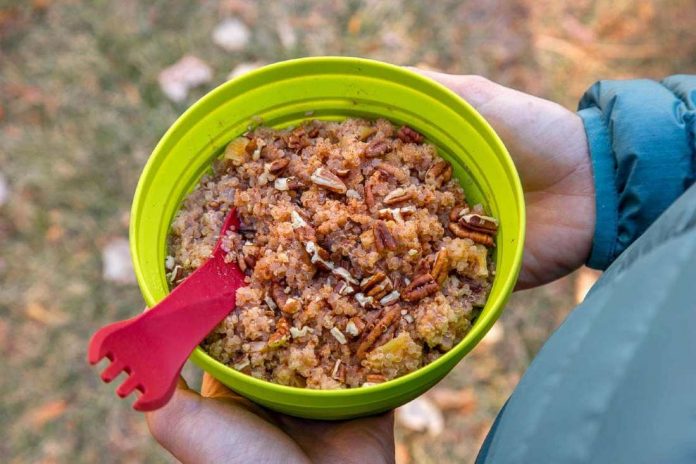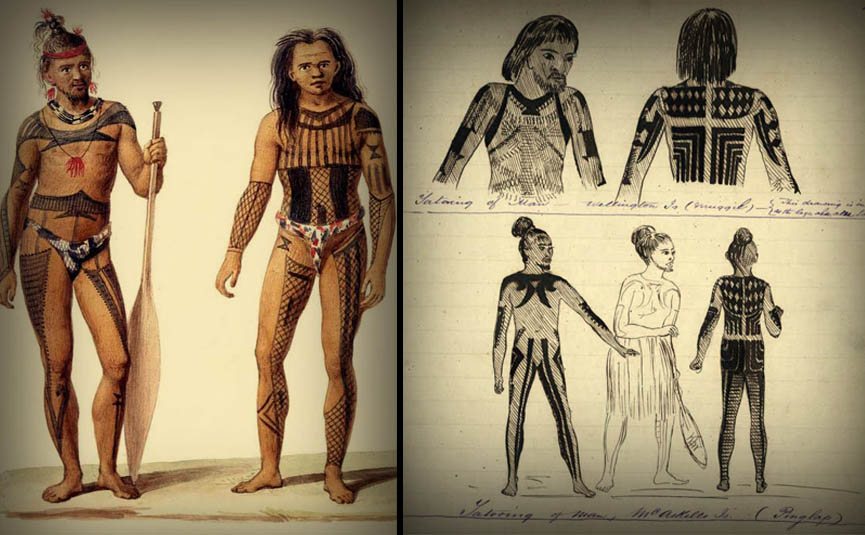It’s normal to get carried away by the excitement of finding the perfect hammock or the right camera accessories to capture your adventure. However, neither stretching out nor taking a picture of a perfect view would be possible if you didn’t get the right nutrients first.
It’s not just about quantity and how much food do you need for hiking. High-quality ingredients are pivotal. Why do we need to consider our nutrition for hiking? Carrying sufficient calories to sustain such an activity can be challenging, especially when going to the backcountry and longer expedition, where dehydrated camping food could be your only fuel. In addition, you need to think of all this while also trying to keep the weight of food and cooking equipment to the minimum.
Freeze-Dried Food
Freeze-drying, or lyophilization, is a very gentle dehydration process used for the preservation of high-quality foods. Freeze-drying is the process by which the solvent (usually water) and/or suspension medium is crystallized at low temperature and removed by sublimation. Sublimation is the direct transition of water from solid-state to the gaseous state without melting.
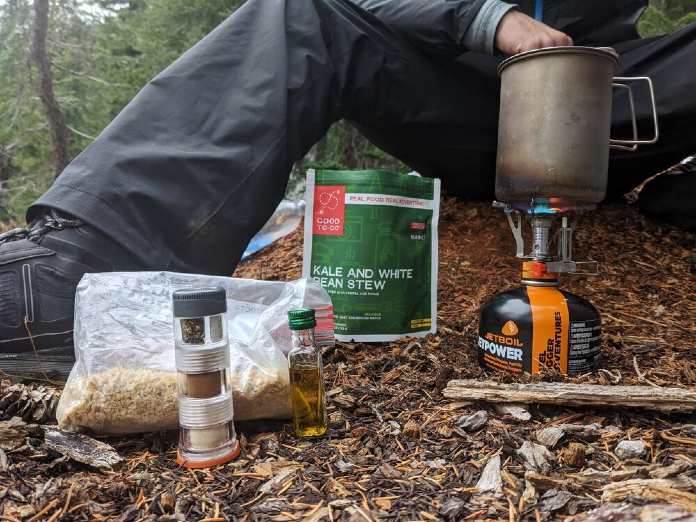
Whether you’re looking for chicken, pork or lamb meal, traditional bolognese sauce with spaghetti or vegetarian meals, there are so many dehydrated camping food options that you won’t get a chance to miss any of your downtown meals. The consumption of this kind of functional food is increasing in almost all industrialized countries, not only because of the increase in outdoor enthusiasts. Our busy lifestyles make meeting the nutritional requirements more difficult. Packaged and pre-cooked foods are not only beneficial for long hikes but also long working hours, which is why is freeze-dried food so popular.
Its usefulness aside, we can’t help but wonder is freeze drying food healthy. Turns out, freeze-dried food is as healthy as it was when the food was fresh. Freeze-dried foods maintain 97% of their original nutritional value. Freeze drying is one of the best ways to preserve food for long-term storage while maintaining the most nutritional value.
Freeze-dried foods possess superior quality as compared to food dehydrated by other methods. The high quality is due to the absence of a liquid phase, as well as the low temperature of the process. In addition, the texture is well preserved due to the process occurring in a solid state. Freeze-dried products are typically crisper and have rehydration ratios four to six times higher than conventional air-dried foods. Other key benefits of freeze-drying include the high recovery of volatiles, retention of structure and surface area, high yield, long shelf life, and reduced weight for storage, shipping, and handling.
Furthermore, you won’t have to worry about how long will freeze-dried food last and will it make the trip, or any other in the near future, as it can be stored between 6 months and 3 years in polybags and 25 years or longer in cans. Though, make sure you always check the expiration date.
Clearly, you should discard the food if there are any visible signs of obvious mould, liquids oozing, unexpected changes in colour, odour bad smells, or a chewy rather than crisp texture or different textures from what is normal for a particular food. Obviously, never taste it if you suspect it’s spoiled.
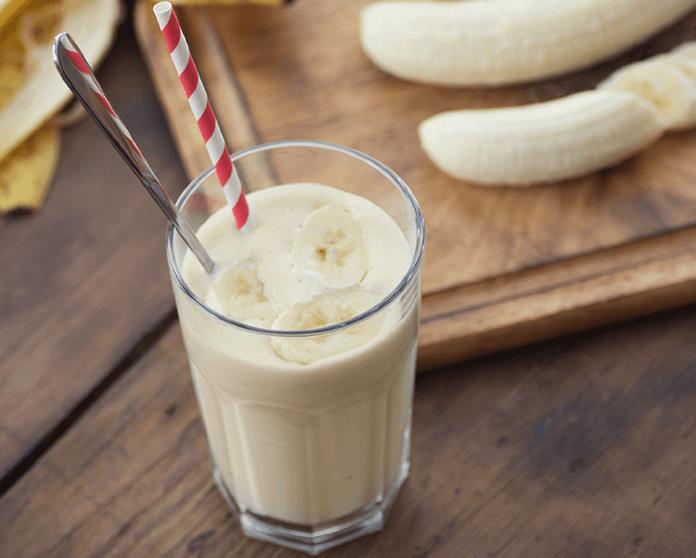
Smoothies
Smoothies already have an unbeatable reputation when it comes to an easy, nutritious and healthy meal. When going camping, choose ingredients that will boost your energy. Blend 1/4 pineapple, peeled, 3 stalks celery and 1 cucumber or a slice of ginger, 1 carrot with greens, 1 apple and 1 lemon, and load up your stainless steel tumbler. These kinds of smoothies will give an influx of antioxidants, fibres and energy to keep you going for hours. You can even get pre-made smoothies, prepared with real fruit and creamy ice cream to give you a tasty smoothie on the run.
If you’re about to set off on an intensive hike, make a smoothie with complex carbs. Not only will it give you the energy burst you need but it’s also easy to prepare and digest, leaving you without a sense of fullness post eating. However, don’t forget that fats and protein are the long-term, slow-releasing source of energy for your body. Thus, your main courses should be packed with proteins and unsaturated fat.
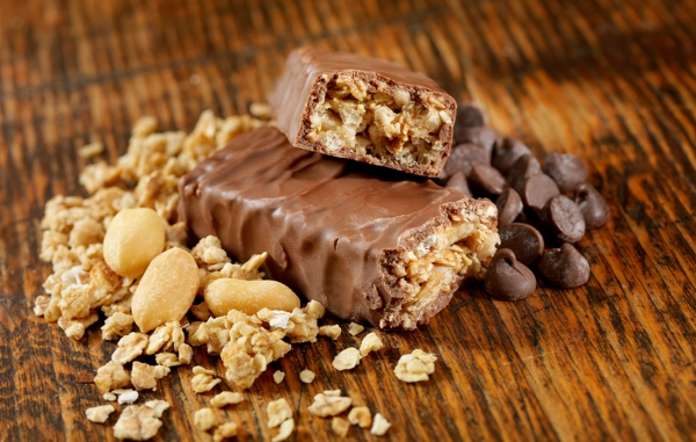
Energy Bars
Energy bars are supplemental bars containing cereals and other high energy foods targeted at people that require quick energy but do not have time for a meal. The great thing about an energy bar is that it’s high-quality food energy neatly packed in a small size. The additional protein makes them very convenient for outdoor adventures that will put your muscles to the test.
Choose energy bars made from natural fruit and vegetable ingredients, providing the key fuel for exercise and muscle performance. Some are made with natural nutrient-rich real food that’s vitamin, mineral & fibre rich. There are more vegan-friendly alternatives to choose from, containing no refined sugar, preservatives or other artificial ingredients.
Sports energy bars try to achieve an optimal blend of nutrition for sustained energy for times when your normal intake of energy and nutrients may not be enough. For best results, eat them about one to three hours before activity along with water to prevent hunger and supply energy to working muscles. During prolonged, lower intensity activity such as hiking or bike touring, they can be eaten during the activity to help satiate hunger and meet carbohydrate demands.
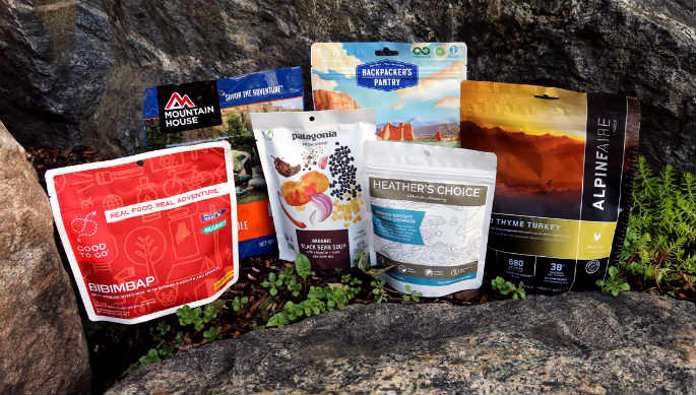
Packs
When going camping in the backcountry, you need to be well prepared for a longer period of time. Hiking packs are an easy solution to meal planning. They include meals, desserts and meal compliments that are so easy to prepare, all you need to do is add water to the convenient pack. It shouldn’t take you more than 10 minutes to prepare one. Moreover, they’re usually packed in nitrogen-flushed, heavy-duty foil pouches, keeping the food safe for at least three years without the need for preservatives.
For example, a complete and proper pack could include cocoa rice balls and fruit for breakfast, sweet and sour lamb for lunch and honey soy chicken for dinner. Moreover, there are snacks and drinks like biscuits, chocolate candy, trail mix, salt, sugar, coffee and creamer sachets and even a spoon and pack of tissues.
What About the Quantity?
How much food do you need for hiking and how much should backpacking food weigh depends not only on your body mass but also on the intensity of the trail. Even so, the average is about 700g – 1kg of food per day (or 2,500 to 4,500 calories), depending on how much you know your body will need.
A person doing strenuous hiking will obviously burn more calories and need a lot more food than someone covering a few miles of the relatively flat trail who plans to chill at the campsite. It’s also a good idea to bring extra food in case you spend an extra night on the trail it an extra meal plus snacks should do the trick, just in case you have to.

